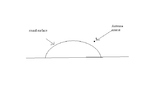kae_jolie
Full Member level 4
Is there a Brewster angle formulation for a curvilinear or a hemispherical surface? The equations I find in the books are for Brewster angles on flat surfaces? Would the same equations apply to the curvilinear or hemispherical surfaces?
Thanks.
Thanks.

